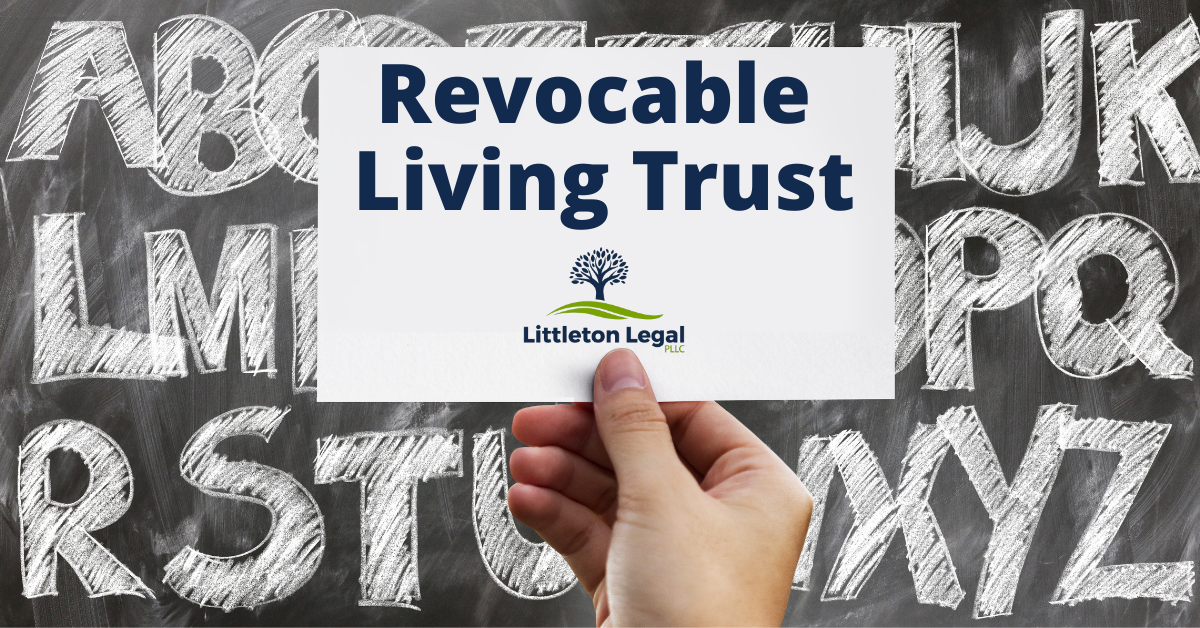Divorce is rarely simple. When two people’s lives are intertwined—physically, emotionally, and legally—separating the individual…

The Basics of Revocable Living Trusts
You may have heard of a Revocable Living Trust (RLT), which is a commonly used estate planning solution. But what exactly are they, who is affected by them, how can they be changed, and what do they accomplish?
What Are They?
Trusts, which are legal entities that hold title to property for the benefit of a living person, are often used as an alternative or supplement to a will. A revocable living trust (sometimes called a revocable trust, an inter vivos trust, or a living trust) is a trust that you create during your lifetime and can change at any time prior to your incapacity or death. RLTs are distinguishable from irrevocable living trusts, which are difficult to alter after their creation.
Who Is Affected by Them?
The living person or charity benefited by the trust is called a beneficiary. The individual who creates the trust, decides how it will operate, and determines what property or funds to include in it is called the grantor (but may also be called the settlor or trustor). The trust is administered by a trustee, who is in charge of managing and investing the funds or property in the trust and distributing them to the trust beneficiary according to the grantor’s instructions, memorialized in a trust agreement. Typically, the grantor names a successor trustee in the trust agreement who will manage the trust if the original trustee becomes incapacitated, passes away, or is otherwise unable to serve.
Often, though not always, the grantor, the trustee, and the beneficiary are all the same person. So, you create a trust and provide the funds or property for it, you could manage it yourself, and then you would distribute the trust funds to yourself as desired.
How Can They Be Changed?
If circumstances change, as they often do, you can alter the RLT through amendment, restatement, or revocation. Typically, a trust amendment can be made by attaching a properly drafted and executed amendment to the original trust document. An amendment may be appropriate for minor changes or deletions, such as replacing a successor trustee. If more significant changes are needed, such as changing beneficiaries of the trust, or if the trust has already been amended multiple times, a document called a restatement of trust should be created. This document allows you to “restate” or rewrite the entire original trust agreement incorporating any necessary changes instead of revoking the original trust and creating and transferring assets to a completely new trust. If neither an amendment nor a restatement is appropriate, you can also revoke the trust.
The law of most states provides that changes should be made according to instructions provided in the trust document, or if there are no instructions, in a way that clearly evidences your intention to make the changes. If you amend or restate the trust, you should create a written document, signed by the grantor and trustee. The document should set forth the trust’s name, the date, and the name of the trustee. It should also mention the portion of the trust document that allows amendments to be made and should identify the part of the trust that will be changed, deleted, or added.
Warning: If the trust has grantors who are spouses or domestic partners, and the trust document does not provide otherwise, most states have special rules regarding changes. It’s best to consult with an attorney if this applies.
Why Have an RLT?
Avoid probate. When you pass away, none of the assets owned by the trust will need to go through the long and potentially expensive probate process that can delay a beneficiary’s access to assets for months or even years. In addition, the trust assets will be distributed privately, and do not become part of the public record. All probate files, including wills, asset inventories, and distribution reports, are open for any member of the public to review, but your family’s privacy is preserved when assets are distributed according to an RLT.
Protect inheritances. You can include provisions in your RLT that will help ensure that, after you die, the trust assets intended to benefit the next generation will not be spent too quickly, vulnerable to creditors, lost in a divorce, or wiped out as a result of other life events.
Plan for your own incapacity. Although an RLT allows you to retain control over your assets, it is important to plan ahead in case you are unable to do so in the future. In an RLT, you can authorize a co-trustee or a successor trustee to manage the trust property if you are no longer able to due to illness, accident, or incapacity. Without an RLT, your family member will have to rely on a financial power of attorney or go to court to ask for legal authority to manage your finances.
What to Do Next
An RLT has many benefits, including enabling you to continue to manage your assets while also providing protection for your beneficiaries. As an experienced estate planning attorney, Littleton Legal can help you plan for the future by establishing a new RLT or changing the terms of an existing one. Call us today at (918) 608-1836 to schedule an appointment to discuss this or any of your other estate planning needs.



